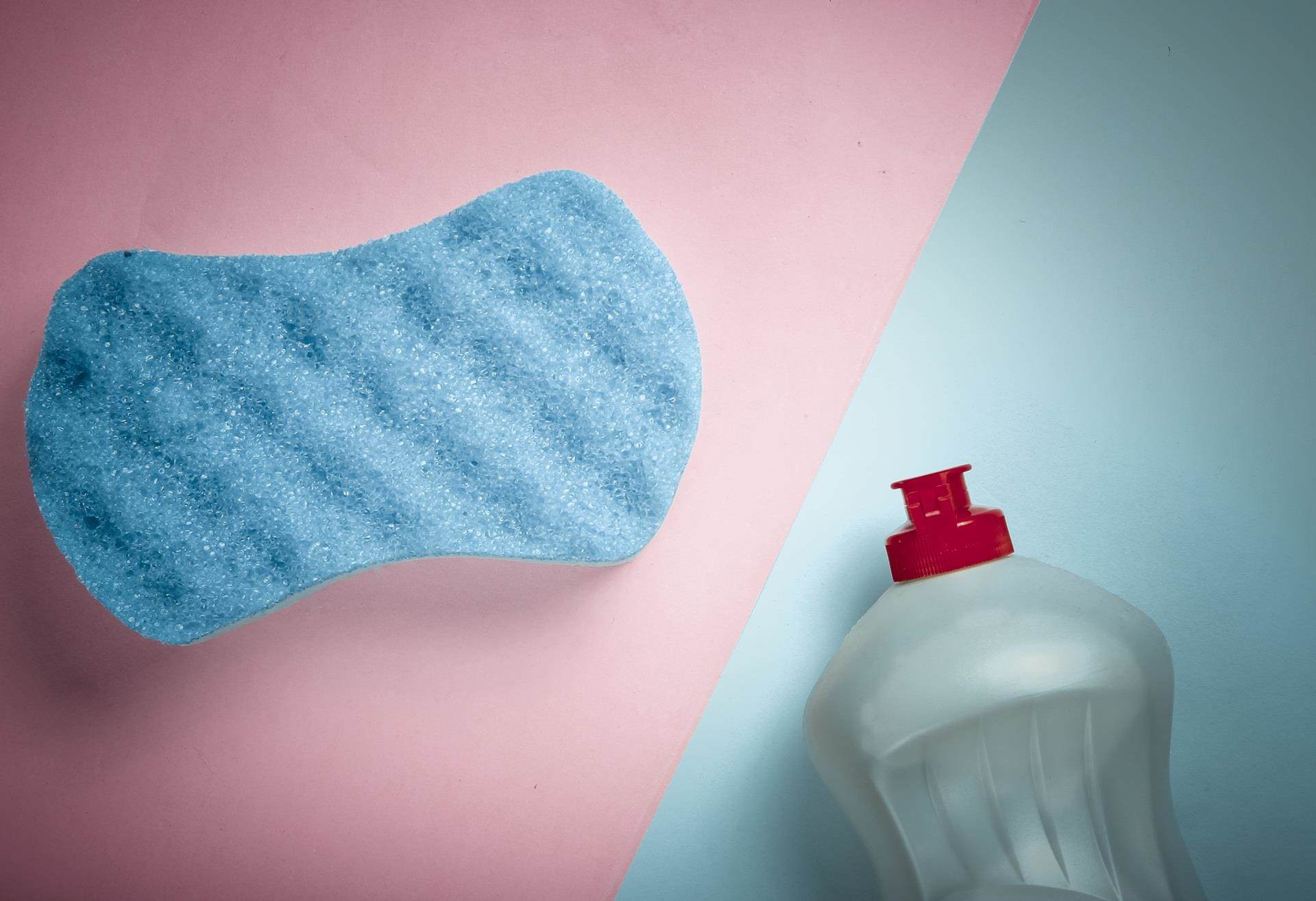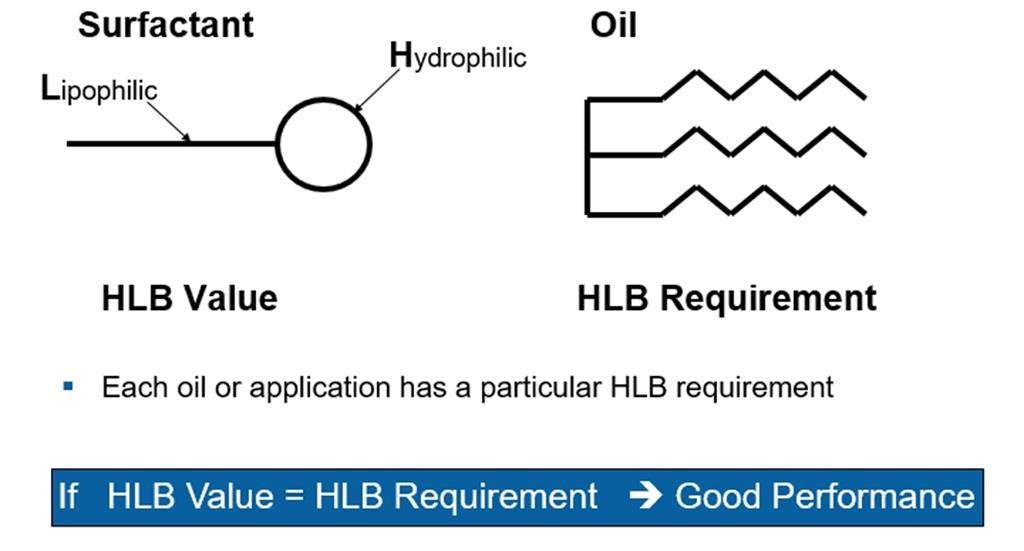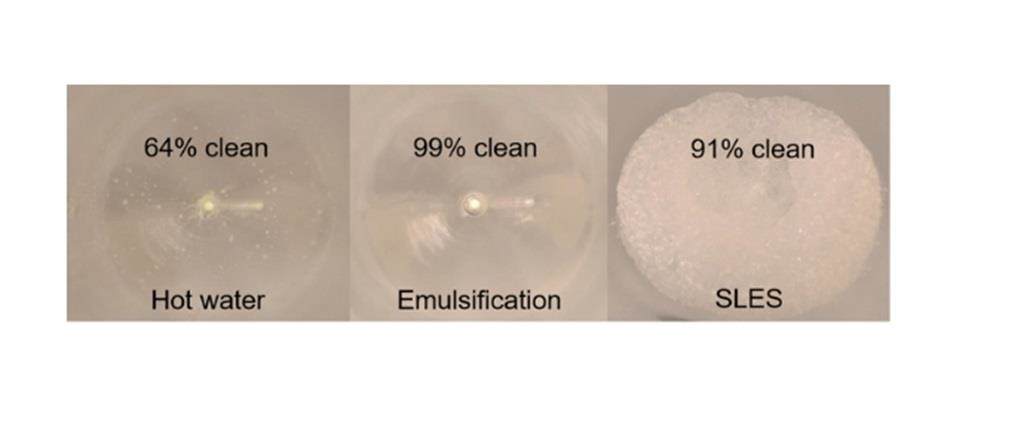
Emulsification and solubilisation

Applications for emulsion technology
Do you need to clean an oil, or stabilise it in your formulation? If so, then you need an emulsion! An emulsion is a stable mixture of two or more immiscible liquids. In every emulsion there is a continuous phase that suspends the droplets of the other element, which is called the dispersed phase. In an oil-in-water emulsion, the continuous phase is the water and the dispersed phase is the oil while in a water-in-oil emulsion the oil is the continuous phase.
Oil in water applications
There are multiple oil in water applications, such as, car waxes and treatments, fabric softeners polishes & waxes, leather treatments and degreasers. We can also offer products for water in oil applications for aerosol polishes and insecticides.

An introduction to the HLB system
The HLB system is designed for non-ionic surfactants, with the ratio between the hydrophile (the part that loves water) and the lipophile (the part that loves oil) giving you the Hydrophile/Lipophile balance (HLB value). To gain optimum formulation performance you need to match the HLB values of the surfactant used to clean the soil, with the target soil (oil). If the surfactant HLB is correctly matched with the required oil HLB, a stable emulsion is formed. There are a range of different formulations that combine both oil and water phases, these include air care, furniture/car care and insect repellency.
Case study: industrial plant cleaning
The problem
An industrial customer that processes long chain fatty acids and alcohols found that their standard cleaning process was not good enough as hard, waxy solids were being left behind in the vessels and pipework. They had difficulty removing the solids, causing cross contamination of batches, which resulted in expensive filtration processes to decontaminate their products.
The requirements
They needed a new cleaning formulation to give them better results, with low foam, low hazards, low cost and a clean in place type approach.
The solution
Design an emulsifier blend to give enhanced cleaning with fewer rinses.
Results
After just one rinse there were large differences in performance, with the emulsification blend resulting in improved cleaning.

Case study benefits
- saves energy, water, time and money;
- one wash step as opposed to three;
- low foam product gives easy rinsing and no associated handling hazards;
- emulsification ensures product washes away fully with no residues being left behind in the pipes; and
- prevents filtration of contaminated batches.
What is solubilisation?
In simple terms solubilisation is a perfectly clear emulsion. This means that the particle size of the dispersed micelle phase is small enough to be invisible.
In the HI&I industry, common oils that require solubilising:
- fragrances;
- essential oils;
- solvents e.g. Limonene;
- emotive ingredients; and
- skin conditioning agents.
Solubiliser usage, optimisation and choice
The required HLB to solubilise an oil is usually at the top of the scale, around 13-18. However, quite often single products work well for solubilisation, rather than a combination. Traditional liquid solubilisers can be very effective, but we have also developed specific products that work very efficiently in some situations.
Solubiliser choice typically comes down to balancing the desired benefits – physical from, dissolution, natural/green criteria and, most importantly, performance. Surfactants in a formulation may also help to act as solubilisers, so this could help to decrease the number of ingredients in your formulation and may even avoid nasty hazard labelling.
If you need help selecting a suitable solubiliser for your formulation then please contact us below – our team of technical experts are always happy to help!


